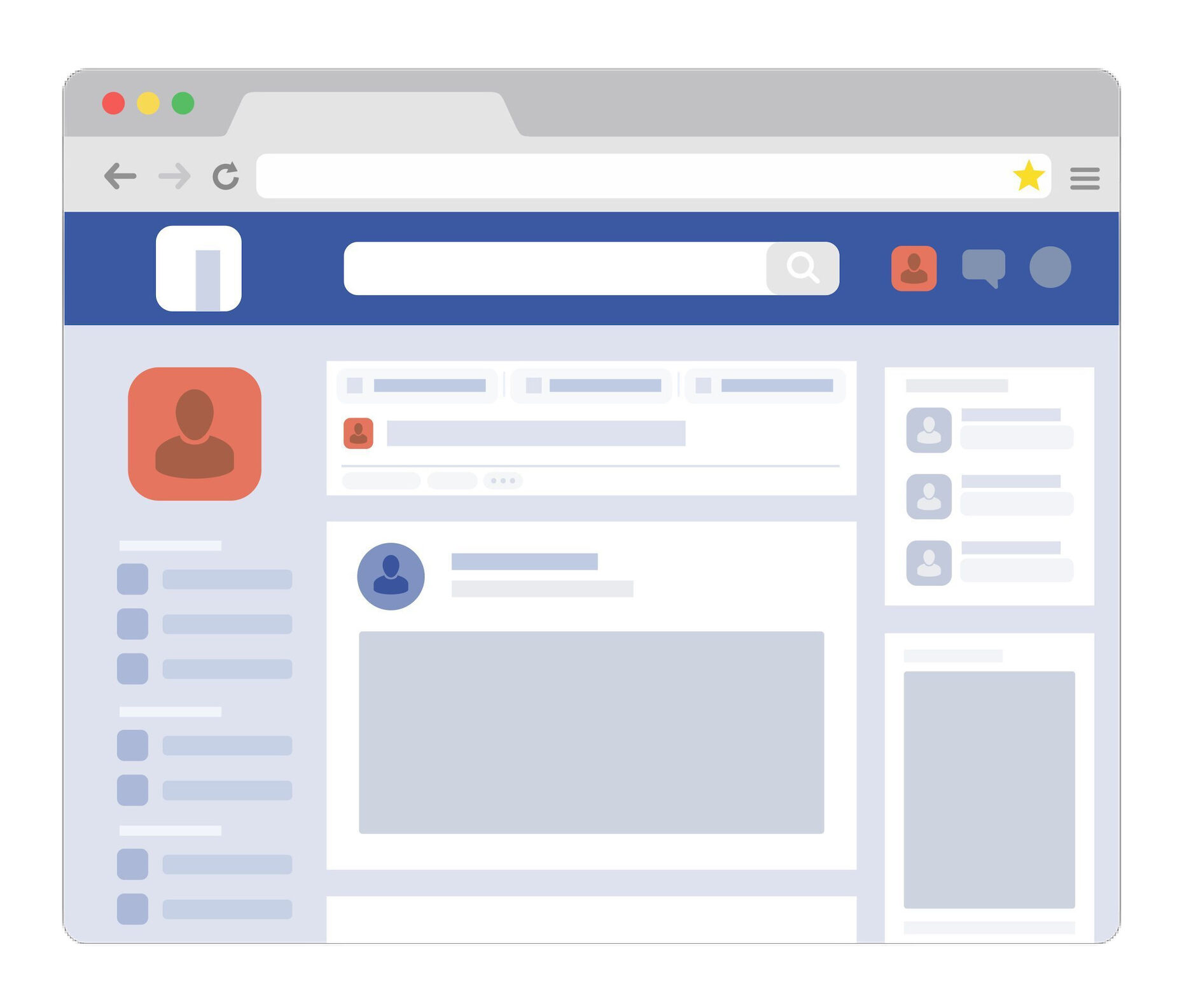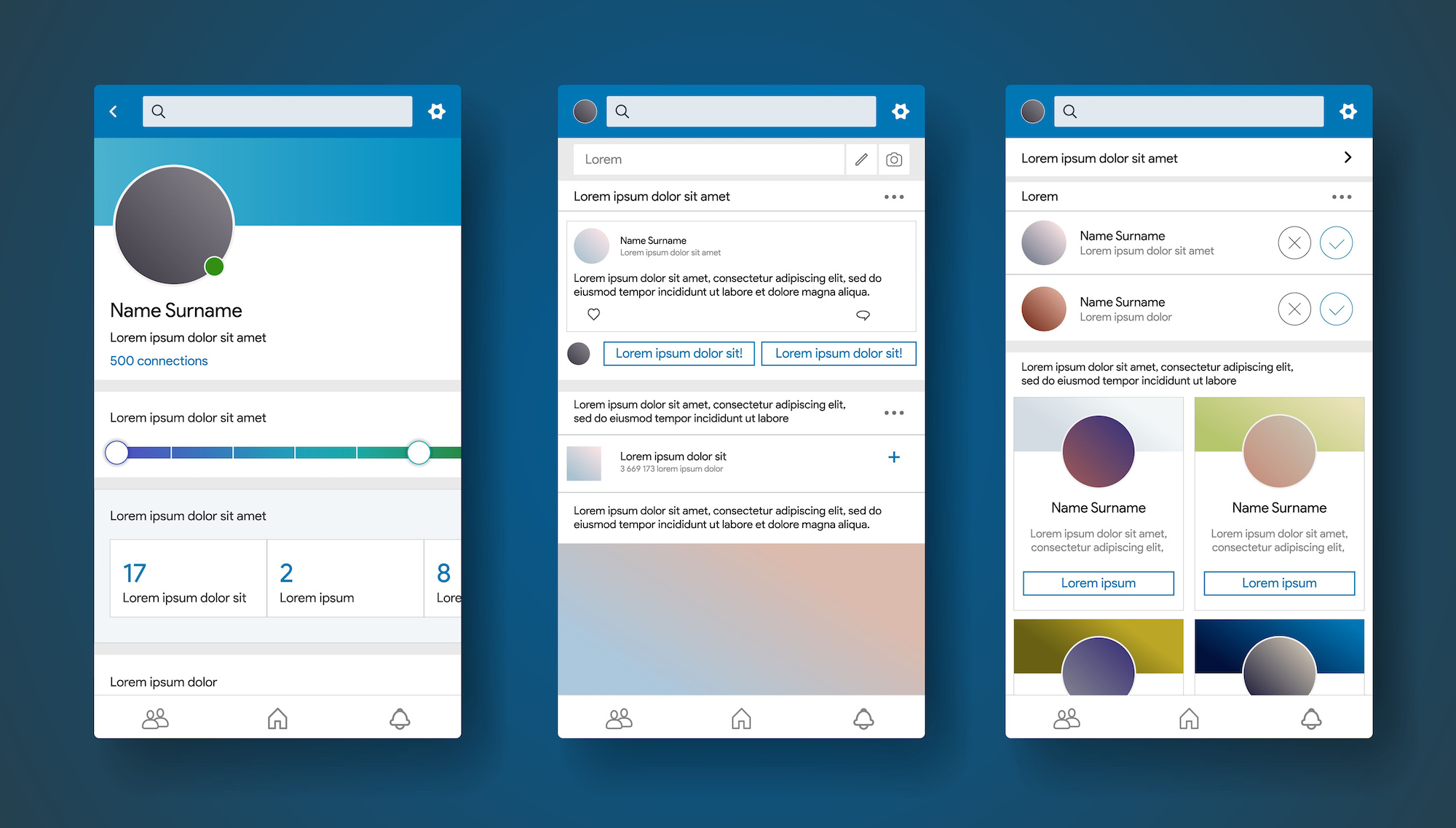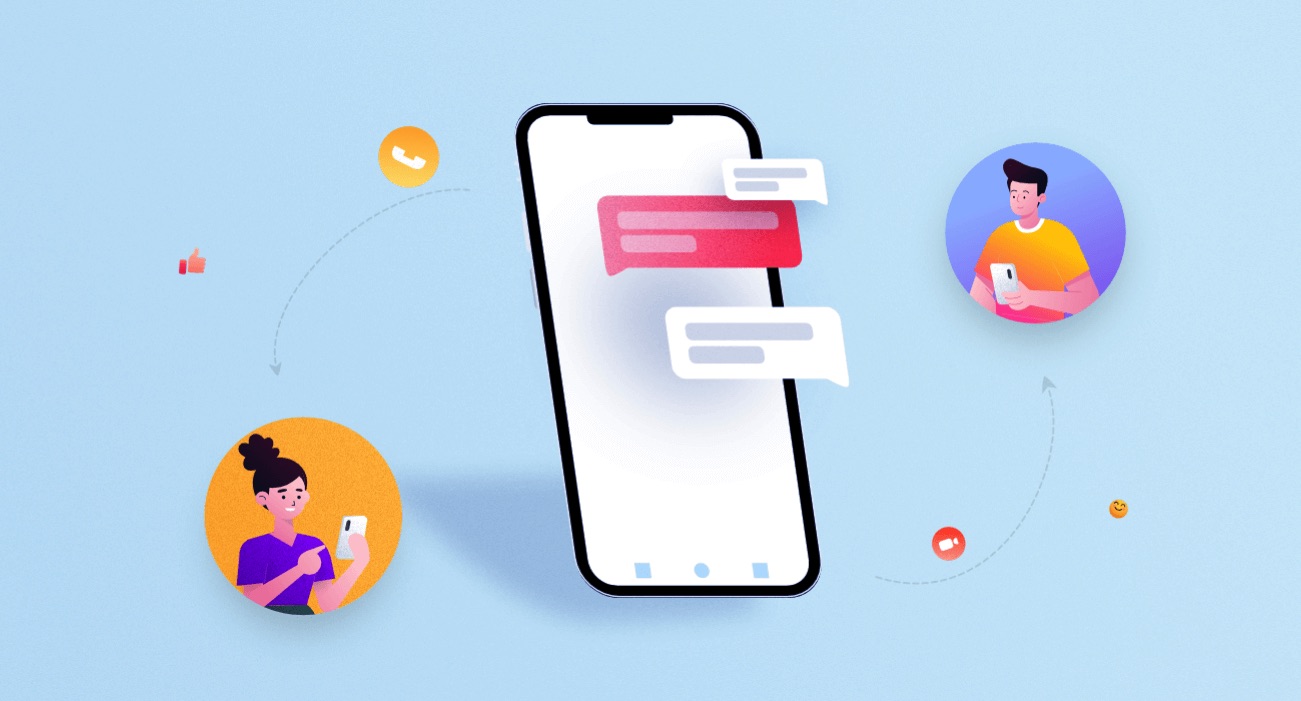Worldwide digital advertising spending reached a whopping 522.5 billion U.S. dollars in 2021 and is predicted to increase to reach a total of 835.82 billion by 2026.
Digital advertising has become an integral part of most marketing strategies. And as technology continues to evolve and consumer behavior shifts towards online platforms, the importance of digital ad campaigns is only expected to grow.
But in today’s fiercely competitive digital landscape, creating an ad campaign that truly stands out and achieves your desired results is no simple task. That’s where ad campaign optimization comes into play.
In this blog post, we’ll explore ad campaign optimization best practices and tips for specific platforms, including Google Search Ads, Facebook Ads, and LinkedIn Ads. Let’s dive in and uncover the secrets to maximizing ROI with strategic ad optimization!
What is Ad Campaign Optimization?
Creating a digital ad campaign is relatively simple, but creating one that performs well and achieves your desired results is a lot more challenging.
The term “ad campaign optimization” refers to the process of setting up, refining, and improving your ad campaigns according to best practices and data analysis. The goal of this optimization process is to enhance the performance of your ad campaigns, maximize ROI, and achieve better outcomes. Without strategic ad campaign optimization, it’s difficult to stay competitive in the ever-changing marketplace.
What Does the Ad Optimization Process Entail?
Below is a general overview of the steps you can take to optimize your paid ad campaigns. In the sections to follow, we will explore ad campaign optimization processes and tips for specific platforms like Google Search Ads, Facebook Ads, and LinkedIn Ads.
Step 1: Set Clear Objectives
Clearly define your campaign goals and key performance indicators (KPIs) such as click-through rates, conversion rates, cost per acquisition, or return on ad spend. These metrics will serve as benchmarks for measuring campaign success.
Step 2: Identify Your Target Audience
Understand your target audience’s demographics, interests, behaviors, and preferences. Use market research, customer data, and analytics to create accurate buyer personas that will help you tailor your campaigns to the right audience.

Step 3: Campaign Structure & Organization
Ensure your campaign is well-structured and organized. Create separate ad groups or campaigns for different products, services, or audience segments. This structure will enable you to track performance accurately and make targeted optimizations.
Step 4: Ad Creative & Messaging
Develop compelling ad creatives that grab attention, clearly communicate your value proposition, and resonate with your target audience. Test different variations of ad copy, visuals, headlines, and calls to action to identify the most effective combinations.
Step 5: Landing Page Optimization
Optimize the landing pages that your ads direct users to. Ensure they are relevant to the ad content, provide a seamless user experience, and have clear and persuasive calls to action. A/B testing different landing page elements can help improve conversion rates.
Step 6: Keyword & Placement Optimization
If you’re running paid search or display campaigns, optimize your keywords and ad placements. Refine your keyword list based on performance data, and regularly review and adjust your bids to maximize visibility and minimize wasted ad spend.
Step 7: Ad Scheduling & Budget Allocation
Analyze performance data to identify the optimal times and days to run your ads. Adjust your ad scheduling and budget allocation accordingly to reach your audience at the most effective times and avoid unnecessary ad spend.
Step 8: Continuous Monitoring & Analysis
Regularly monitor campaign performance using analytics tools and tracking metrics. Identify trends, patterns, and areas of improvement. Analyze metrics such as impressions, clicks, conversions, and ROI to gain insights into campaign effectiveness.
Step 9: A/B Testing & Experimentation
Test different elements of your campaigns, such as ad variations, landing page designs, targeting options, or bidding strategies. Conduct A/B tests to compare performance and identify the most successful approaches.
Step 10: Iterative Optimization
Based on the insights gathered from monitoring and testing, make data-driven adjustments to your campaigns. Optimize underperforming elements, scale successful strategies, and implement ongoing improvements to achieve better results.
As you can see, there are many different elements of digital ad campaigns that require testing and optimization. By taking a comprehensive approach to ad campaign optimization and addressing all of them, you can achieve significant improvements in the efficiency and effectiveness of your ad campaigns.
Choosing the Right Digital Advertising Platforms
The ad campaign optimization process and specific steps will differ depending on the advertising platform you use. That’s why determining which ad platform to leverage is an important first step. After all, if you’re advertising on the wrong platform, you could fail to reach your target audience and achieve your objectives, even if you optimize the campaign to perfection!
Below are some of the most popular paid advertising platforms:
Google Search Ads
Google is the largest search engine, making it the king of paid advertising platforms. Google Search Ads offer extensive reach to a wide range of audiences across different industries and interests, as well as targeting options based on search intent and location. It’s best used when targeting users that are actively searching for products or services. However, with high competition and increasing costs associated with the platform, it requires ongoing optimization and strategic management.
Facebook Ads
Facebook Ads, or Meta Ads, is another platform with a massive user base. With advanced targeting capabilities and diverse ad formats, it’s great for building brand awareness, reaching a broad audience, and leveraging detailed targeting options based on interests, demographics, and behaviors. It’s popular among B2C and e-commerce businesses. However, user ad fatigue, decreasing organic reach, and complex campaign structure present challenges for ad campaign optimization.
LinkedIn Ads
With a large professional audience and B2B targeting options, LinkedIn is one of the most popular advertising platforms among B2B businesses. Although you can usually expect a higher cost per click and more limited organic reach, it’s an effective platform for both lead generation and recruitment. It’s a great place to demonstrate your industry expertise via thought leadership content.
Instagram Ads
Instagram Ads allow for access to Facebook’s targeting options, so you can target highly-specific user demographics. The platform is highly visual and is a popular choice for lifestyle and product promotion. Its user base is younger and more visually based compared to Facebook, so it’s important to optimize your ad campaigns with high-quality visuals. On the negative side, Instagram Ads have limited link options in captions making it more difficult to direct traffic off of the platform.
Other paid advertising platforms to consider include Twitter Ads, YouTube Ads, TikTok Ads, Pinterest Ads, and Microsoft Ads (formerly Bing Ads). While comparing different platforms, consider your target audience, platform user base, platform reach, targeting options, available ad formats, features, platform reputation, integration opportunities, and pricing. If you don’t have the capacity to handle the research and testing internally, consult with a paid ads expert.

Google Ad Campaign Optimization
Now, let’s dive into some specific optimization strategies and tips for Google Search Ads, followed by Facebook Ads and LinkedIn Ads. Keep in mind, regular monitoring, analysis, and optimization are crucial for achieving optimal results across all advertising platforms.
Google is the largest player in the digital advertising world, boasting a reported average ROI of 200%, or $2 for every $1 spent. And that’s just an average, so imagine the ROI you can achieve with strategic ad campaign optimization!
Google Ads Optimization Tips:
- Refine Keywords: Continuously analyze and refine your keyword list. Use keyword match types effectively and negative keywords to improve ad targeting and eliminate irrelevant clicks.
- Ad Relevance and Quality Score: Create highly relevant ad copy that aligns with keywords and landing pages. Focus on improving your Quality Score (a diagnostic tool offered by Google) by enhancing ad relevance, landing page experience, and expected click-through rate.
- Bid Management: Regularly review and adjust your bids based on performance data. Use bid adjustments for specific locations, devices, or audiences to optimize campaign targeting and maximize results.
- Ad Extensions: Utilize various ad extensions such as site links, callouts, and call extensions (aka click-to-call extensions) to enhance your ad visibility and provide additional information to users.
- Conversion Tracking: Configure event tracking in Google Analytics 4 to measure and optimize campaign performance based on specific events completed, including conversions.
- Remarketing: Set up remarketing campaigns to target users who have previously interacted with your website. Tailor your ads to this audience and create personalized messaging to encourage conversions.
- Landing Page Optimization: Ensure your landing pages are optimized for conversion. Align the landing page content with your ad copy and use clear calls-to-action (CTAs) to drive user action.
- A/B Testing: Experiment with different ad variations, landing page designs, and calls-to-action, to identify high-performing combinations. Conduct A/B tests to compare performance and make data-driven decisions.
- Performance Monitoring: Regularly monitor key performance metrics such as click-through rates (CTR), conversion rates, and return on ad spend (ROAS). Use Google Ads reporting and analytics tools to gain insights and identify areas for improvement.
- Stay Updated: Keep abreast of new Google Ads features and updates. Google frequently introduces new tools and enhancements that can help optimize your campaigns.
Google Ad Campaign Optimization Score
For more ideas on how to improve your Google Ads campaigns, you can also check on the optimization score (an estimate ranging from 0-100% of how well your account is set to perform) and recommendations provided by Google.
Although this can be helpful, you should carefully consider the recommendations before applying them. Some common recommendations from Google, such as implementing automated bidding, would significantly increase your ad spend, making your campaigns less sustainable in the long run. That’s why many marketers aim for a campaign optimization score of 80% or so rather than a perfect 100%.

Facebook Ad Campaign Optimization
According to WordStream, the average conversion rate for Facebook Ads across all industries is 9.21% and the average cost per action is $18.68. With some careful ad campaign optimization and testing, you can significantly boost your ROI and get even more bang for your buck.
Facebook Ads Optimization Tips:
- Audience Targeting: Utilize Facebook’s extensive targeting options based on demographics, interests, behaviors, and custom audiences to reach your desired audience effectively. Generally, interest targeting is used to drive purchase intent and consideration, while demographic targeting is used to drive upper funnel metrics.
- Compelling Visuals: Use eye-catching visuals and videos to capture attention and drive engagement. Test different ad formats (e.g., carousel ads, video ads) to identify what resonates best with your audience.
- Ad Relevance: Facebook Ads receive a relevance score between 1 and 10 that is updated as the target audience interacts and provides feedback on the ad. To boost ad relevance, craft ad copy that is relevant, personalized, and tailored to your target audience. Align your messaging with their needs, pain points, or interests.
- A/B Testing: Experiment with different ad variations, headlines, visuals, and ad placements to identify the most effective combinations. Test different audiences to optimize your targeting.
- Ad Frequency and Rotation: Monitor ad frequency to avoid ad fatigue and optimize your ad rotation to ensure fresh and engaging content is shown to your audience.
- Conversion Tracking and Optimization: Implement the Meta Pixel and track conversions on your website. Use conversion optimization strategies to optimize campaigns for specific goals like purchases or lead generation.
- Lookalike Audiences: Utilize Facebook’s Lookalike Audience feature to expand your reach by targeting users who are similar to your existing customer base.
- Ad Scheduling: Analyze your audience insights to identify peak engagement times and schedule your ads accordingly to maximize visibility and engagement.
- Ongoing Monitoring and Optimization: Continuously monitor campaign performance, evaluate key metrics, and make data-driven adjustments to improve results.
- Creative Refresh: Regularly refresh your ad creative to avoid ad fatigue and maintain audience interest.

Linkedin Ad Campaign Optimization
LinkedIn is a commonly used advertising platform among B2B marketers, with nearly one-fifth of B2B digital advertising in the United States appearing on LinkedIn in 2019. Although LinkedIn Ads campaigns tend to cost more, they can deliver impressive results with some strategic optimization.
LinkedIn Ads Optimization Tips:
- Professional Targeting: Leverage LinkedIn’s professional targeting options such as job title, industry, company size, and seniority to reach your desired professional audience effectively.
- Compelling Ad Copy: Craft engaging ad copy that highlights the value proposition and speaks directly to the pain points or aspirations of your target audience.
- Thought Leadership Content: Promote thought leadership content like whitepapers, ebooks, or webinars to establish credibility and generate leads within your industry.
- Sponsored Content: Use LinkedIn’s sponsored content format to promote your content directly in the LinkedIn feed, increasing visibility and engagement.
- Account-Based Marketing (ABM): Leverage LinkedIn’s ABM features to target specific companies or decision-makers within those organizations for highly-targeted campaigns.
- Dynamic Ads: Utilize LinkedIn’s dynamic ads to personalize ad creative and messaging based on the LinkedIn profile data of the user seeing the ad.
- Conversion Tracking: Implement LinkedIn’s conversion tracking to measure and optimize campaign performance based on specific actions or goals completed by users.
- A/B Testing: Test different ad variations, headlines, visuals, and calls to action to identify the most effective combinations and optimize campaign performance.
- Performance Monitoring: Monitor key metrics such as click-through rates, conversion rates, and cost per conversion to identify areas for improvement and optimization.
- Ongoing Optimization: Continuously optimize your campaigns based on performance data, refine targeting, adjust bids, and experiment with different strategies to achieve your campaign goals.
Ad Optimization Mistakes to Avoid
Now, let’s take a look at some of the most common ad optimization pitfalls. From improper conversion tracking to overly restrictive budgeting, avoiding these pitfalls will help ensure your campaigns reach their full potential.
- Not setting up conversion tracking properly: Properly setting up conversion tracking is crucial for measuring the effectiveness of your ad campaigns. Failing to set it up correctly can lead to inaccurate data and an inability to attribute conversions to specific ads or keywords. Take the time to implement conversion tracking codes and ensure they are placed correctly on your website. Regularly test and verify that conversions are being accurately tracked to make data-driven optimization decisions.
- Too much focus on saving money: While managing your ad spend is important, focusing solely on saving money can hinder your campaign’s performance. Overly restrictive budgeting or excessively low bids may limit your ad’s visibility and reach. Instead, strike a balance between cost management and allowing your ads to compete effectively to reach your target audience. Consider the value of conversions and return on investment (ROI) when making budgeting decisions.
- Not enough focus on users’ post-click experience: It’s essential to prioritize the user experience after they click on your ad. Make sure that the landing page you direct users to is relevant, user-friendly, and optimized for conversions. Pay attention to page load speed, clear call-to-action (CTA), and engaging content to ensure a positive post-click experience and maximize the chances of conversions.
- Constant tinkering without giving campaigns enough time to optimize: It’s tempting to make frequent changes to your campaigns, but constant tinkering can disrupt the optimization process. Allow your campaigns enough time to collect sufficient data and generate meaningful insights. Set specific timeframes for evaluation and optimization, balancing the need for adjustments with the need for stability to achieve reliable results.
- Bidding on the wrong search terms that are not relevant to your target audience: Carefully select and refine your keyword list to ensure you are targeting the right search terms. Avoid bidding on broad or generic keywords that may attract irrelevant traffic. Instead, focus on more specific, relevant keywords that align with your target audience’s search intent to increase the chances of attracting qualified clicks and conversions.
- Over-emphasis on Google’s optimization score and recommendations: While Google’s optimization score and recommendations can be helpful, don’t rely on them blindly. Understand that each campaign is unique, and the recommendations may not always align with your specific goals or strategies. Evaluate the recommendations carefully, considering the impact on your campaign’s performance and your overall marketing objectives before implementing them.
- Using enhanced CPC automated bidding: Enhanced CPC (eCPC) automated bidding can be effective, but it’s important to monitor performance closely. Automated bidding strategies are not suitable for all campaigns and industries. Regularly review and adjust bids manually if necessary to ensure that your bidding strategy aligns with your campaign goals and budget.
- Not using ad extensions properly: Ad extensions provide additional information and enhance the visibility of your ads. Ensure that you are using relevant ad extensions such as site link extensions, call extensions, and structured snippets effectively. Tailor your ad extensions to complement your ad copy and provide valuable information to users, increasing the chances of engagement and conversions.
- Not revisiting and refining your target audiences: Audiences evolve, and it’s crucial to revisit and refine your target audience regularly. Analyze campaign performance data, demographics, and user behavior to ensure you are reaching the right people. Adjust your targeting parameters, such as demographics, interests, or remarketing lists, to refine your audience targeting and maximize campaign effectiveness.

Ad Campaign Optimization Support from Flyrise!
Ad campaign optimization is the secret sauce that turns good campaigns into exceptional ones. By setting clear objectives, understanding your audience, and strategically refining elements of your campaigns, you’ll see a dramatic improvement in performance and ROI.
At Flyrise, we’re passionate about helping businesses thrive through professionally optimized ad campaigns. If you’re looking to take your ad campaigns to new heights but need expert guidance, our team of seasoned ad specialists is here to support you. Book a call with Flyrise today to discuss your ad campaign optimization needs and unlock the power of data-driven success.
Happy optimizing!






